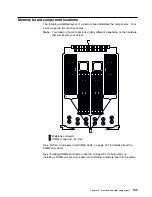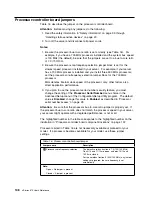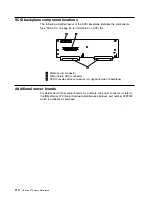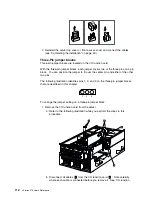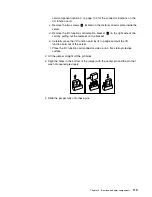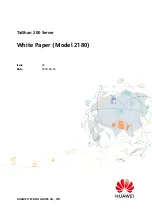
Power-on self-test (POST)
When you turn on the server, it performs a series of tests to check the operation of
server components and some of the options installed in the server. This series of
tests is called the power-on self-test or POST.
POST does the following:
Checks the operation of some basic I/O function card, processor
daughterboard, and I/O board operations
Checks the memory
Compares the current server configuration with the stored server configuration
information
Configures PCI adapters
Starts the video operation
Verifies that drives (such as the diskette, CD-ROM, and hard disk drives) are
connected properly
If you have a power-on password or administrator password set, you must type the
password and press Enter before POST will continue.
While the memory is being tested, the amount of available memory appears on the
screen. These numbers advance as the server progresses through POST and the
final number that appears on the screen represents the total amount of memory
available. If POST finishes without detecting any problems, a single beep sounds
and the first screen of your operating system or application program appears.
If POST detects a problem, more than one beep sounds, or an error message
appears on your screen.
Note:
A single problem might cause several error messages. When this occurs,
work to correct the cause of the first error message. After the cause of the
first error message is corrected, the other error messages usually will not
occur the next time you run the test.
POST beep codes
POST generates beep codes to indicate successful completion or the detection of a
problem.
One beep indicates the successful completion of POST.
No beep indicates that a irrecoverable error occurred during POST.
More than one beep indicates that POST detected a problem. For more
information, see “Power-on self-test (POST) beep codes” on page 129.
Error messages
Error messages indicate that a problem exists; they are not intended to be used to
identify a failing part. Troubleshooting and servicing of complex problems indicated
by error messages should be performed by trained service personnel.
Hardware error messages that occur can be text, numeric, or both. Messages
generated by your software generally are text messages, but they also can be
numeric.
Chapter 6. Solving problems
117
Summary of Contents for eServer 370 xSeries
Page 1: ...User s Reference xSeries 370...
Page 2: ......
Page 3: ...IBM xSeries 370 User s Reference...
Page 32: ...16 xSeries 370 User s Reference...
Page 188: ...172 xSeries 370 User s Reference...



